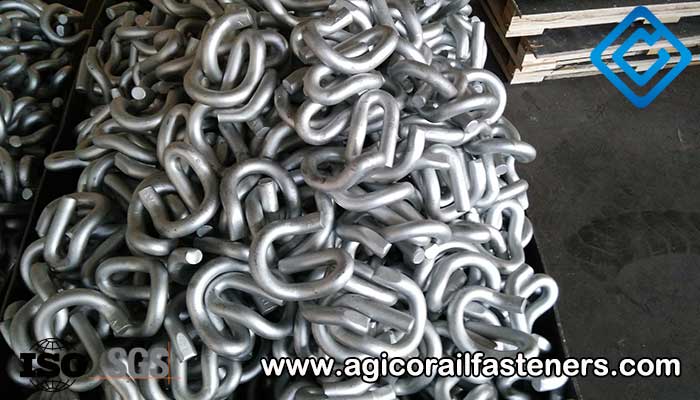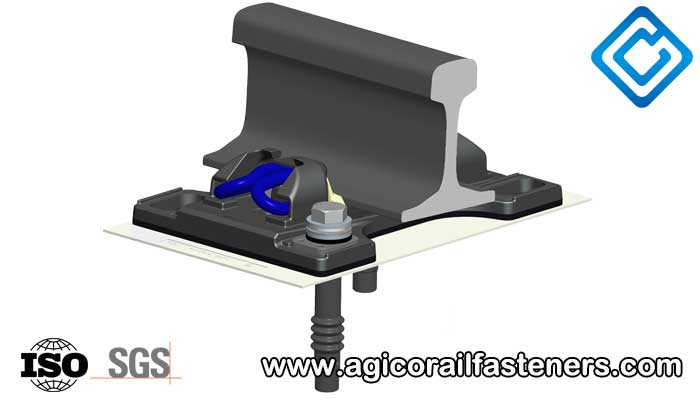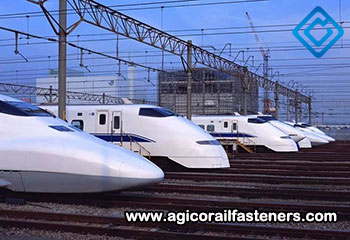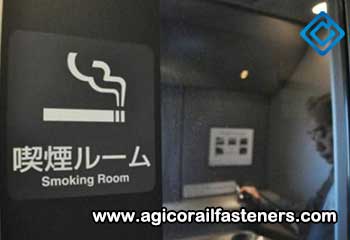Types Of Rail Fastening Systems And Rail Clip Fastening System
Rail Clip Fastening System Plays an Important Role in Rail Fastening Systems
Rail clip fastening system also named elastic fastening system which belongs rail fastening systems. What is rail clip fastening system? What’s the difference between rail clip fastening system and rail fastening system? If you want to know the answer, we need start to introduce the rail clip.
Rail Clips are the most crucial component of rail fastening systems. So if you want to be clear of rail clips, you must put the entire types of rail fastening system into comprehensive consideration. Next, different types of rail clips are as follows:

Rail fastening systems are basically classified into two categories: rigid system and elastic system. Rigid system refers to the system used in the early 1900s that was rigidly bolted the rail to the wooden sleeper. Later on, rigid system was replaced by elastic system which has more elasticity. Elasticity is a proxy for the movement the steel rail goes within rail seat. Within elastic fastening systems, there are large variations of elasticity in design. But the core of the design is rail clip.
Elastic Fastening Systems (Rail Clip Fastening System)

Elastic fastening systems have four main components: an imbedded anchor, a clip or spring, an insulator, and a pad (or pads) between steel rail and concrete sleeper. Each component is to perform a specific function within rail fastening system. Rail clip is designed to provide a clamping force (or toe load) to the rail. The clamping force is one factor that determines the rigidity of the system. The anchor is to hold the clip to the sleeper. It is cast into the sleeper during the manufacturing process. The pad is to properly reduce the loads by the rail onto the sleeper. The insulator is to properly insulate the fastening system from the rail to aid reliable operation of the signal system.
Bolted or Screwed Clip Fastening Systems And Driven Clip Fastening Systems
In bolted or screwed clip fastening systems, their clips are to be anchored by bolts or screws threaded into the inserts that are cast into the concrete sleepers. The systems usually have the advantage of allowing the adjustment of clamping forces. For some bolted clip fastening systems, it is possible to vary rail height to keep proper track geometry. For some bolted or screwed clip fastening systems, a disadvantage is that their installations are difficult to get a consistent clamping force at each rail seat if they cannot work with the use of specialized tools or machinery. It is important to identify whether the movable portion of the clip is fixed onto the bolt or screw. If yes, the movable part of the clip tends to loosen the bolt or screw, and then the fastening system will be inspected to ensure no loss of torque.
For driven clip fastening systems, it generally includes a cast-in steel shoulder (or anchor) and a clip. It is driven into the shoulder to get a proper clamping force. These systems are installed with less skillful operators because their installations can be correctly confirmed by visual inspection. The clip fastening systems are generally less labor-intensive to install and remove. The disadvantage is unable to make adjustments of the clamping force.
We receive enquiries in English, Español (Spanish), Русский язык (Russian), Français (French) and العربية (Arabic). Our professional team will reply to you within one business day. Please feel free to contact us!



